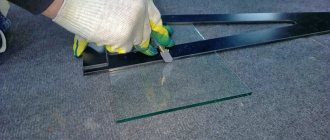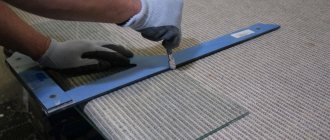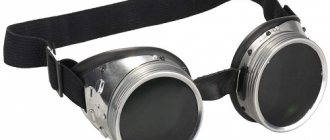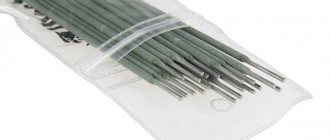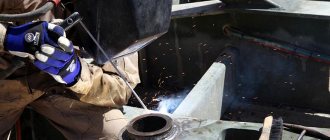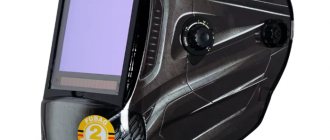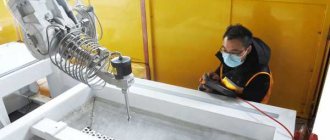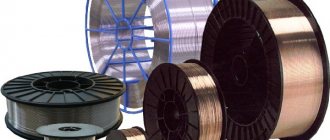If you want to know what welding documentation is drawn up and submitted, we will tell you about it.
The entire welding process requires compliance with standards, documentation and increased control over all stages of work. To properly organize the welding process and obtain the desired results, it is important to comply with production standardization specifically for those works that are carried out in conditions of increased danger. For a more complete understanding of all the requirements for welding (at a hazardous production facility - a hazardous production facility), you need to study the FNP and other regulatory documents (NTD). The regulations clearly define all tolerances and requirements for welding at hazardous production facilities.
Welding production project (WPP)
The production of metal structures is a complex process that requires the correct selection of base and welding materials.
In addition, you need to know the rules for accepting all materials, the nuances of manufacturing factory parts and installation. Therefore, a specialist first develops a welding production project (WPP), which reflects operations to prepare production for the execution of work, indicates technologies, and the direct work required at the site. Since any project requires knowledge, a welding production project (WPP) can be performed by a level III or IV welding production specialist who has been certified by the National Welding Control Agency (NAKS). The welding itself must be a quality job, despite the different methods of implementation. Therefore, the welding production project (WPP) includes the equal strength of the welded joint, which depends on the quality of the welding materials, the correctness and procedure of welding and the qualifications of the welder.
Welding technology is selected for each construction project individually, therefore a welding production project (WPP) is developed for a specific facility, taking into account its functional characteristics, climatic and geographical indicators.
The welding production project (WPP) includes general information that we have grouped for you. The document must contain a list of welding materials recommended for use at the construction site, a list of welding equipment, methods and scope of control of both the supplied metal and welding materials and the finished metal structure, as well as:
- Description of the design,
- Description of the incoming inspection of metal structures, welding materials and welding equipment,
- Information on the qualifications of welders and welding production specialists,
- Welding technologies and methods for monitoring test and acceptance joints,
- Justification for the choice of equipment for installation and welding work,
- Justification for the selection of welding materials and requirements for their storage and preparation,
- Instructions for the sequence of assembly operations of metal structures,
- Selection of optimal welding modes,
- Technological welding charts,
- Quality control of assembly and welding works,
- Technology for correcting defective areas,
- Instructions for labor protection during welding work.
Depending on the complexity of the execution, the welding production project (WPP) will differ in cost, which is determined after the customer contacts a specialist and studies the technical specifications (TOR). All figures will be justified and agreed upon with the client. The price also includes the completeness of the initial data and the complexity of the welding.
The welder strictly follows the instructions for preparing the joint and the welding procedure. Therefore, the welding work project (WPP) contains the full scope of work performed, information about technical control, and the persons inspecting the welded joint. Most of the information is indicated in the technological map. After welding, the technical control department checks the information from the project with the results of the work performed.
The welding production project (WPP) includes initial data, which are essentially: drawings, technical specifications, an explanatory note or a requirement from a technical supervision representative. All information that is reflected in the project is divided into the appropriate sections: Occupational health and safety requirements”, “Fire safety requirements”, “Environmental protection requirements”, “Requirements for the safe performance of work on moving goods by cranes and other hydraulic machines”, etc. d. The list of information that must be reflected in the sections is developed taking into account minimizing costs and eliminating losses in the production of metal structures.
In our company you can order the production of metal structures on a turnkey basis in order to save as much time and money as possible, necessary for drawing up a welding production project (WPP). Contact us!
Requirements for employees and managers
It is permissible to manage welding processes at hazardous production facilities only to those workers who correspond (and this is confirmed by documents) to highly specialized professional knowledge. A mandatory point is the presence of a NAKS certificate.
Additional, complete information on the topic in the article: How to check the NAKS certificate according to the register of welders - find yourself by last name on the official website
Thematic videos:
NAKS. Certification procedure for welders and welding production specialists.
How to get NAKS. What do you need for this? What documents are needed to obtain the NAKS?
Video series: Welding pipes for NAKS certification.
How to pass the welder exam for NAKS certification (preparation)
In addition, it is important for managers to be able to read welding drawings and know basic technical abbreviations and designations. You can learn more about how welds are designated in the drawings - welding symbols - in the article on our website.
Workers directly involved in the management of the welding process are faced with the following tasks:
- prepare performers for this dangerous process;
- select suitable employees;
- clearly control the stages of welding processes;
- guarantee the quality of the final welds.
Important: in emergency situations, a leader must be calm-blooded and be able to make instant, correct decisions.
Only those performers who have completed specialized training and qualifications in their specialty plus received a welder’s certificate indicating the category assigned after passing theory and practice are allowed.
When welding at hazardous production facilities, a confirmed highest qualification in the specialty is required. In organizations, welders who have completed the training process and certification are assigned a personal stamp by order; its number is indicated in the certificate.
It is important that a performer admitted to the welding process should not have any contraindications for both regular preventive medical examinations and those carried out immediately before each work shift.
PPR and welding process sheets
Welding production in construction (laying main and intra-block pipelines, installation of buildings, etc.) and in production (factories for the production of metal structures, welding of machine frames, etc.) requires organizational training. Depending on the Customer’s requirements and the conditions of work, the development of organizational and technological documentation is required. These include:
- PPSR welding projects;
- technological maps for welding and installation work;
- operational and technological maps for assembly and welding of butt joints;
- technological instructions for welding.
How and who fills out the documents
For example, in construction, when carrying out welding work, a document “Journal of Welding Work” is kept and this is carried out exclusively by professionals. It takes into account the entire range of welding operations performed. This type of document cannot be welded. This is done exclusively by a specialist with NAKS level 2 and higher. This type of accounting is regulated by an order from management and is signed by the employee assigned to this type of task. The job description (or TD) states the obligation to keep a welding log. This is a condition of compliance with labor laws.
Technological maps of welding technical documentation
Technological map of TC welding is a document as part of the project for the production of welding works PPSR, according to which all technological operations of assembly and welding of welded joints are carried out during the installation of pipelines and metal structures. It reflects the entire sequence of welding and installation work: the degree of preparation and preparation of welded joints, assembly, welding, preparation of joints for non-destructive testing. At the work site, the welder must be guided by the technical map and comply with all its requirements.
The welding flow chart describes the preparatory operations, the selection of welding equipment and welding methods, as well as the final operations in terms of the scope of non-destructive testing. An annex to it are QCs for types of welded joints. The composition and content are the same as that of a conventional construction flow sheet.
Main sections of the project and source documentation
The composition of the CTD depends on the characteristics of the facility and the planned work. What sections may it include:
- Introduction.
- Description of the object.
- Parameters of connected nodes and elements.
- List of materials used (including gases).
- Assembly and welding technologies.
- Quality control measures.
- Requirements for health, safety, fire, environmental safety.
When developing, they are guided by building codes, GOSTs for the technologies used, PICs, working documentation, and a master plan. Take into account the list of equipment and the number of qualified personnel who will perform work on the PPSR . For more accurate calculations and feasibility studies, the conditions for the delivery of materials, special equipment, and devices are analyzed.
Operational and technological cards for assembly and welding
Operational and technological maps of assembly and welding quality control departments are intended for setting up welding equipment, selecting operating modes of the equipment used, reflecting assembly operations and the process of making welding joints.
Composition of the operational and technological map:
- parameters of the welded joint, indicating the welding method, type of welded joint and seam, wall thickness of the elements
- welding materials used
- section for preheating butt joints before and during work
- geometric dimensions of edge cutting
- weld joint parameters
- structural elements, dimensions and deviations of connections
- welding parameters
- sequence of roller application during multi-roller tunneling
- cleaning of structural elements
- preparation of elements of welded edges and surfaces for welding
- burning of edges and adjacent surfaces
- assembly of structural elements
- welding of welded elements
- marking of welded joints
- scope of quality control
When welders are admitted to the site, admission is carried out with the implementation of the permissible control welded joints KSS according to the quality control department for their welding, included in the technical specifications. The number and dimensions of elements are determined on the basis of current regulatory documentation.
For each operation, the materials, equipment and tools required for its implementation are given. According to this quality control inspection, welding of any type of welded elements (pipes, I-beams, angles, sheets, etc.) is carried out by the welder without any unnecessary questions to the technical staff. All stages are described in full, down to the last detail.
The assembly of joints according to quality control procedures, depending on the diameter of the pipes being welded, can be carried out using external and internal centralizers, and metal structures using clamps and other assembly devices. The section “Welded joint parameters” contains all the data about the elements being connected: type indicating GOST or other regulatory document.
During welding
Now let's look at the documents drawn up during the work process.
Executive scheme (form)
On the as-built diagram or form, joints, supports, and elevation marks are indicated. Indicate the distances between joints, axes and rows of the building. They record data on the welders who performed the work. Performed in drawing programs most often in Autocad.
Welding log
Certificates for welding tolerance joints or KSS (control welded joints)
Acts on control of KSS
Documents are drawn up for various controls - VIC, ultrasonic testing / RK, and mechanical tests - destructive testing.
Thematic videos:
1) About the measuring instruments that a VIC specialist should have
2) Carrying out ultrasonic testing
3) Computed radiography in action
Certificates for control of finished products
These acts (conclusions) on VIC and non-destructive testing, if provided for in regulatory and technical documentation, are drawn up during the work process, as well as upon completion, depending on the customer’s requirements. Examples of conclusions and acts can be found here.
Thematic videos: 1) Types and methods of non-destructive testing
2) Main defects of welded joints and their detection by NDT methods
This was a short list of exactly what as-built documentation is subject to execution when carrying out welding work.
After completing the welding process, it is necessary (assigned in the FNP) to clean all joints and connections made, remove slag residues, and remove contamination (sagging and metal residues). After the inspection, all identified defects will need to be corrected. It will also be necessary to fill out certain documentation in full and based on the requirements.
Development of welding technical and quality control process cards
The development of technological maps and quality control procedures for assembly and welding should be carried out by the chief welder or engineering personnel who have a certificate and a NAKS protocol of at least level 3. The complexity of developing operational and technological maps for assembly and welding is determined by the specificity of the work performed and the availability of relevant knowledge from the developer.
By contacting us, you can be sure that the technical specifications and quality control instructions are drawn up correctly. Our specialists have more than 10 years of experience in welding production on pipelines, welding metal structures, and polypropylene pipes.
Quality inspection inspections are compiled for all technologies: manual arc with coated electrodes RD; manual argon arc RAD; mechanized in protective gases with solid wire MP, self-shielding flux-cored wire MPS; automatic with solid wire in shielding gases AADP (double-sided welding), APG, flux-cored wire API, automatic submerged arc API, etc.
Operational and technological maps are also drawn up for repairs, taking into account various repair methods (with complete cutting or sanding of a rejected area, etc., depending on the requirements of regulatory documents).
We also develop technological instructions for enterprises carrying out welding work.
Technological instructions for welding
Technological instructions for welding are necessary for welding work on a construction site or in a factory environment at a production base. Contains a description of the preparatory and main processes, as well as the final stages of accepting connections. In the preparatory period, the certification requirements for management personnel and welders, the equipment and welding materials used, the procedure and methods for eliminating rejected joints based on inspection results are indicated.
Division of structures, consolidation of reinforcement products
When developing a project, it is necessary to provide for the division of the erected metal structure into separate elements, to list the methods of its assembly and welding. You should select installation and assembly devices, equipment, indicate the features of installing stairs and scaffolding. The CTD must contain SR technologies, control operations (quantity, types), volume of batches of manufactured products, labeling, features of storage and movement of finished elements. The developer must focus on the technological capabilities of the contractor who will carry out the installation.
The PPSR must contain requirements for the degree of enlargement of reinforcing elements (if it is carried out): diagrams of tiers and installation zones, assembly accuracy, names of planned work, control methods, safety rules.
Welding production project
You are reading this article for one of several reasons:
- the GSN inspector or the RosTechNadzor inspector requires the presence of a welding project at the site;
- the customer's technical supervision engineer has current regulatory information and asks to show him the PPSR;
- You are performing work at a high-risk industrial facility and (or) your specialists are performing welding work on critical structures with highly complex assembly seams.
For each of the three cases you will find a solution below!
So, a welding project or PPSD is an organizational and technological document containing:
- scope of work on welding, heat treatment and control of welded joints;
- detailed technology and sequence of execution of individual welds of various types;
- separate technological (operational) maps for welding joints, taking into account heat treatment and control operations;
- statement of requirements for welding materials;
- list of equipment necessary for welding, heat treatment and inspection of welded joints;
- requirements for the qualifications of welders performing certain types of welds;
- requirements for welding equipment and welding materials;
- safety and labor protection requirements when performing welding work in specific conditions at your facility;
- calculation of labor costs;
- work schedules, human and material resource requirements.
In general, we can say that the composition of the welding work project is similar to the composition of the standard PPR, with the only exception that the PPSR describes the technology for performing welding work.
Also, it is worth noting that in accordance with the instructions of STO NOSTROY 2.10.64-2012 “Welding work. Rules, control of implementation and requirements for the result of work” welding work can be performed in accordance with technological documentation for welding, drawn up in the form of a section on welding as part of the work execution project (WPP). Thus, you can include technological maps for welding work as part of the general work permit for construction and installation works at your facility.
It is worth remembering that not only how quickly you will be allowed to work, but also the fact that you will not face fines for the absence of this document depends on how your PPSR is developed and how accurate, correct and up-to-date information this document contains. And it’s worth remembering that people’s lives depend on how accurate the PPSR is! People, not only those who carry out construction and installation work at a construction site and must comply with labor protection requirements, but also people who will subsequently operate the facilities, buildings and structures in the construction of which you take part.
When choosing a developer for a work project, including welding work, you are choosing not just a company that you trust with your money - you are choosing a company that you trust with your life and the lives of the people around you. Choose the best, of which there are only a few on the market!
You only need a company that employs professional engineers certified by RosTechNadzor and who themselves have performed work on the construction site and know what they write about in the PPR. You should choose a company that has strict regulations and requirements for the composition and implementation of work projects, guaranteeing compliance of the developed document with current regulatory documents (SP 48.13330.2011; MDS 12-81.2007; MDS 12-29.2006; STO NOSTROY 2.10.61-2012; PB 03-273-99, RD 03-495-02, RD 03-613-03, RD 03-614-03, RD 03-615-03), which with 100% probability ensures the absence of comments on the welding project with on the part of regulatory authorities, and, most importantly, allows you to accurately and efficiently perform welding work on objects of the highest complexity.
We not only meet the above criteria, we will give you a guarantee for the developed welding project - 365 calendar days (a whole year), during which we will unquestioningly make all the necessary changes to the PPSR according to your requirements. We will give you a material guarantee - our liability to you is insured in the amount of 30,000,000 rubles without any SRO, but under a direct insurance contract!

